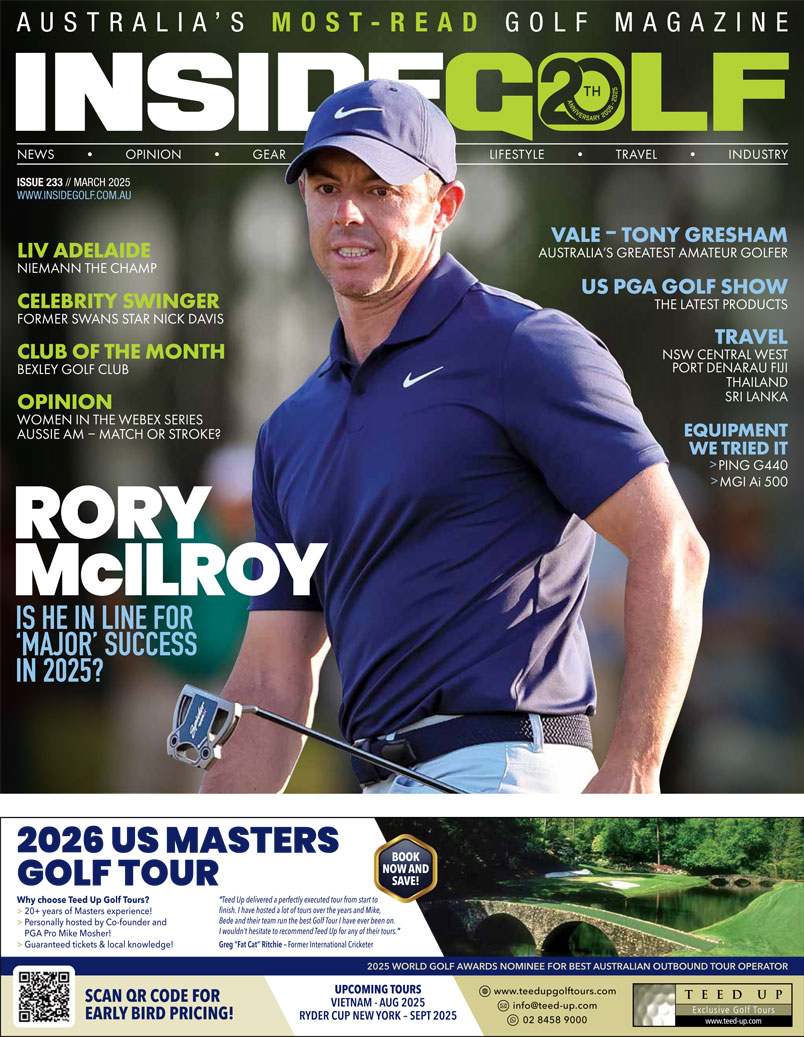The PGA of Australia and the WPGA should be congratulated on their initiative in promoting the game of golf over the past few years by staging events involving both male and female golfers.
They’ve done it in several ways – by presenting significant tours for both male and female professionals, by staging events where men and women play separate tournaments, like they do in the Australian Open, and by allowing men and women to compete for the same prize pool, as in the Webex series.
They have also provided a platform for disabled golfers and for juniors, though it’s an opportunity that hasn’t really been taken up by either of those segments.
But perhaps now is the time to take a deep breath, review how the experiment has gone so far, and make a few changes before any further damage is done.
I enjoy watching women play golf and marvel at their skill, their ability to seemingly never play a false stroke, and the style and joy they bring to our game. I’d just as soon watch an LPGA tournament as a PGA or DP World Tour event.
And I’m going to be really annoyed if I’m accused of being chauvinistic when I say that there are too many women taking up spots in the Webex tournaments played in Australia over this summer.

Thailand teenager Choicheva Wongras challenged at the Webex Players Series Murray River event, before finishing one shot short of the playoff.
The format for the Webex Series is that there are 64 spots for male professionals, 64 for female professionals (though the full allocation is not always filled), 10 for invited players and six for elite amateurs. That makes up a typical field of 144 players, with no provision for anybody to try to pre-qualify.
The culling process for the men is so severe that accomplished professionals like Steven Jeffress, Jay Mackenzie, Shae Wools-Cobb, Anthony Choat and even Andre Stolz, the undisputed king of the older brigade, couldn’t make the field for the Webex Murray River event at the beginning of February.
Nor could any of the rising brigade of talented young professionals like Damon Stephenson, Riley Taylor, Zach Ion and Blaike Perkins. Worse still, they didn’t even have a chance of playing their way into the field.
The selection process was the same for the Webex Players Series Victoria in late January, an event won by the veteran Michael Wright. Females were offered 64 places in the field, with 61 of those spots being taken up.
The golfers who filled the last 20 places in the field – that is, those who were the poorest-performed of the 84 who failed to make the 36-hole cut – were all females. The women did a little better in the Murray River event, but still filled 18 of the last 24 places.
I’m not going to embarrass anybody by naming them, or by conducting a public analysis of their golfing history, but it’s fair to say the achievements to date of most of them could be described as modest.

Veteran Michael Wright was a winner of the Rosebud Victorian Webex Series event.
Some of the female professionals, and one or two of the amateurs, have performed wonderfully well over the summer. Thailand’s Choicheva Wongras, Cassie Porter, Ashley Lau, Kirsten Rudgeley, Robyn Choi, Abbie Teasdale, Kathryn Norris, Jazy Roberts and young Lion Higo have all been in contention and their presence has enhanced the events in which they participated.
I know that Sarah Jane Smith won the TPS Murray River in 2022 against the men, and that Hannah Green won the same event the previous year. Even though those wins were very much against the flow, I thrilled at them, and I’m not advocating that women not be allowed to compete against the men.
What I am suggesting is that there should be fewer of them, and that they should have to have reached a certain level of ability, performance and experience before they make the field.
I acknowledge the argument that playing against stronger opposition can help less experienced competitors learn and improve. I just don’t think a televised $250,000 tournament on Australia’s biggest professional tour is the place to start the education process.
The Australasian Tour is now enjoying an international profile and it is important that it continues to attract healthy galleries, enthusiastic television audiences, and an increasing number of elite overseas players.
It will have a greater chance of achieving those goals if our priority was to ensure our events are contested by the very best available talent, determined not by the gender of the entrants but by their potential ability to win a tournament.




